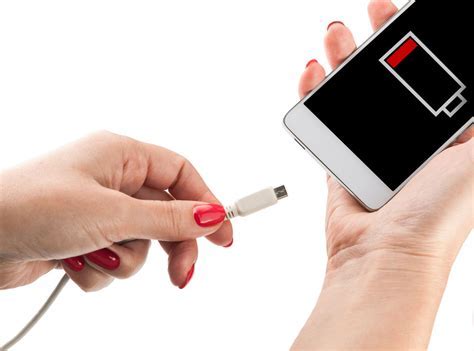Search by topic:

Energy is a very topical subject now and the news is mostly bad, related to the war in the Ukraine.
There are however many positive ideas being developed and our IdeaSpies Energy Editor, Kylie Hargreaves, is tracking them. These are the latest ten:
1. Self-charging Micro Batteries
By utilising the humidity from the air or the sweat from your skin could you power your wearables without ever plugging in?
Researchers at University of New South Wales say - "yes, you can…soon".
2. Limitless Clean Ocean Energy
Energy associated with ocean currents can be captured, just like wind currents can with wind turbines. Ocean turbines can be fixed to the seabed, or float nearer the surface with moorings attached to the seafloor. No one technology has yet emerged as a clear winner, but this Japanese turbine, which has been in development and testing for many years is clearly still in the race. After successful recent trials, the company is set to scale up to a 2 megawatt unit.
3. Heat to Electricity-Is this the end for the Steam Turbine?
Steam turbines have to date been the most traditional way to covert heat into electricity. Steam turbines are able to convert between 35-60% of the heat into electricity. However, scientists have kept investigating alternative ways to turn heat into electricity. Thermophotovoltaic cells (TPV) were initially promising, but only ever achieved efficiency rates of 20-32%. By increasing both the temperature of the heat emitter & the absorption properties of the TVC (visible, ultraviolet & infrared) engineers at MIT have achieved efficiency rates of 40%, with a clear idea of how to reach 50%.
Israel lacks roughly 12,000 acres to meet its 30 percent share of renewable energy goal by 2030.But what if land wasn’t a limiting factor for solar energy? What if we could harness the unused surfaces of our lakes and various types of water reservoirs instead? This is the concept behind floating photovoltaics (FPV), otherwise referred to as floating solar––PV modules mounted on buoyant platforms that float on sunlit bodies of water where surface conditions are calm. Xfloat’s system has buoyancy tanks arranged in a grid of connected vessels that control the rotation of the PV tracking tables in unison.
90% of a medical implant's volume can be the battery. Glucose fuel cells, which use the body's own sugars to create electricity are not new, but they have traditionally used materials which pose their own set of challenges. But scientists have developed a new form of glucose fuel cell that is only 400 nanometers thick (thinner than a human hair), by using a ceramic electrolyte which is easy to miniaturize and integrate on a silicon chip, is bio-compatible & can withstand high temperatures (for sterilisation).
6. Honey, I shrunk our Food Waste
Take 500kg of food waste, blast it with oxygen at low heat to speed up decomposition, add no water and no chemicals, and within 24 hours you end up with around 100kg of high-nutrient residual material, free of odour and pathogens, which can be used for fertilizers or in the production of biofuels. Better yet, you simply wheel your food waste bin into the unit, set it and forget it. WasteMaster takes care of the rest, including remote management and trouble-shooting of most operational problems.
7. Solar Canals as Solar Farms
India first started covering water irrigation canals with solar panels back in 2014 - providing both water and power to communities. By using the canals the solar panels don't compete for scarce land, they also protect the water from both evaporation and algae blooms, while the water cools the panels increasing their efficiency. Solar Canals come with their challenges, including higher engineering costs. But despite this, California is setting up a pilot project in the Turlock Irrigation District, in the San Joaquin Valley.
8. Storing Sunlight in a Bottle for 18 Years
In a 'green chemistry' discovery scientists have taken a molecule of carbon, hydrogen & nitrogen, exposed it to sunlight & then stored the energy-rich isomer as a liquid & film. Returning the isomer to its original state releases heat, link that to a thermoelectric generator and you also get electricity. This creates a zero-emission, long-term solar energy storage system(18years!), which uses benign, all-renewable materials. Not yet delivering large-scale energy, nor cost-effective, but it is MOST promising! Pun intended - as the energy storage process is known as - Molecular Solar Thermal (MOST).
9. Solar Energy from Fruit Waste
UV rays carry more energy than visible light, however, most solar panels are designed to capture visible light, not UV. In 2020, a Philippine student found a way to capture UV energy, convert it to visible light and thus deliver conventional solar power. Better yet, his flexible resin (solar film), created from fruit & vegetable waste, can be applied just anywhere, including high-rises to create a vertical solar farm. His innovation won the 2020 James Dyson Foundation Sustainability award and is to be trialled soon in a medical clinic in the Philippines - can't wait for the next update.
10. Longer Lasting Lithium Ion Batteries
Australia produces around 3,300 tonnes of lithium-ion battery waste each year (CSIRO). Finding a way to extend the useful life of these batteries would likely have numerous financial and environmental benefits. Researchers at the University of Queensland have identified a better way to protect parts of the lithium-ion battery from corrosion. A layer of crystals, only 1 atom thick, can protect against corrosion, while also supporting higher voltages and therefore greater energy density, as well as removing the need for cobalt, which can often be one of the most costly elements in a lithium-ion battery.
See more Energy ideas, explained simply, here.